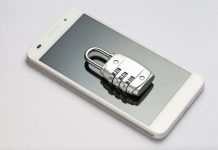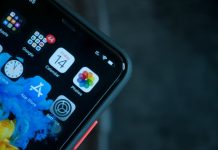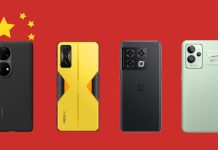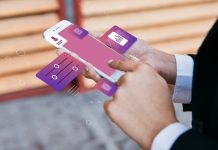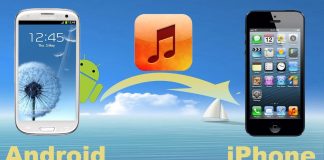Whenever the data connection made available by the chosen telephone operator is activated on your smartphone, a symbol appears next to the icon that informs about the signal status, displayed in the notification area which could be any of the following: GPRS, E, 3G, H, H +, LTE / 4G.
When the data connection on the smartphone is active, and you are not in the vicinity of a known Wi-Fi network (for which you have previously stored the access credentials), by default, the phone tries to make the data connection using the standard mode performing connection that is supported by the telephone network and the smartphone itself.
![]()
4G LTE
The best performing connection mode on the move is the use of LTE. The theoretical speeds are 100 Mbps downstream and 60 Mbps upstream: this means that you can download data at 12.5 MBytes / sec and send data at 7.5 MBytes / sec.
From a commercial point of view, 4G / LTE connections are presented to allow data transfer up to 72 Mbps. The actual performances are typically lower due to the distance from the base station, the presence of obstacles, and the signal strength and network congestion level.
To enjoy LTE connectivity, it is necessary to have a device that supports that, at present, it is (on the horizon, there is already LTE Advanced ) the most recent evolution of cellular mobile phone standards.
LTE is commercially presented under the name 4G even if, technically, it is not a fourth-generation technology.
The ITU ( International Telecommunication Union Radiocommunication Sector), a specialized agency of the United Nations based in Geneva, which deals with the definition of the standards used in telecommunications, had, in fact, repeatedly specified that LTE did not have the requirements to be defined as a 4G technology. Specifying that 4G will be LTE Advanced and WiMax 2.0, the ITU has then, in a certain sense, given “the clearance” to baptize LTE as 4G, at least for mere marketing purposes. For LTE Advanced, see Telecom presents LTE Advanced: launch soon.
The appearance of the 4G icon when the data connection is activated, therefore, indicates that the standard for the fastest mobile connection being used (you are in an area covered by the 4G / LTE signal, and your device mobile is LTE-compatible).
4G / LTE coverage
At the moment, it is Vodafone that offers the best indication of the areas of the Peninsula reached by the 4G / LTE signal.
It is not enough that the 4G / LTE signal covers the geographic area in which you are located. In order to connect to the network in this mode, your device must support LTE.
H + and H
By now, all smartphones are HSPA ( High-Speed Packet Access ) compatible, i.e., they allow you to reach higher speeds when transferring data on the move than the previous UMTS standard.
On paper, HSDPA allows us to reach up to 56 Mbps (7 MBytes / sec) even if, as usual, the real performance can be considerably lower.
This connection mode is indicated by an H icon in the notification area of the smartphone, next to the signal graph.
HSPA + is commonly referred to as a “pre-4G” technology; that is, it anticipates the performance achievable with a fourth-generation connection.
H +’s appearance informs the user that a data transfer is in progress at the maximum possible speed offered by the data link.
3G
The appearance of the 3G icon (or the symbol “U”) informs you that you are connected to the mobile network in 3G mode. That is, you are using third-generation standards to send and receive data. In urban areas, the types of available connections are HSPA, while, secondarily, 3G is still available both in more densely populated areas and in peripheral areas.
The maximum download speed is typically between 384 Kbps (48 KB/sec) of the UMTS standard and 7.2 Mbps (900 KB/sec) of the “basic version” of HSDPA.
E (EDGE)
When the 3G / HSPA signal is long gone or absent, the icon E may appear when the data connection is activated on the mobile phone.
An acronym for Enhanced Data rates for GSM Evolution, EDGE is a standard that provides for data transfer over the GSM network and proposed in the past as an evolution of GPRS.
EDGE is a second-generation standard, absolutely inadequate even for transferring web pages moderately rich in information but still valid, for example, to exchange some messages on Whatsapp.
Downstream EDGE can go up to 236-473 Kbps (29 KB / sec-59 KB/sec), but the performance is typically much poorer even though the standard has been designed to combine multiple GPRS channels in parallel.
GPRS
The stone age for mobile connections. This is a very slow 2G (GSM) technology that limits users, for example, to only consulting websites in a “mobile” version. Here, 58 Kbit / s (7.2 KB/sec) is not exceeded even if the value is often lower.
How to force the use of 3G or HSPA on Android?
The Android operating system does not allow by default to block 3G or HSPA use so that the slower second-generation standards are not used when using the data connection.
Usually, all smartphones are set to use the standard capable of guaranteeing the best performance ( WCDMA preferred ); when the signal is weak; however, it automatically folds back to using a 2G connection.
To prevent the mobile device from suddenly switching to using, for example, EDGE ( appearance of the E icon ), you can try a simple trick.
After opening the phone’s numeric keypad, you will have to enter the special code* # * # 4636 # * # *.
![]()
From the Check menu, touch the Phone information item and scroll the screen until you find the set preferred network type.
![]()
Here you just have to “tap” on the default setting (i.e., WCDMA preferred ) to bring up the choice menu.
![]()
To force Android to use 3G instead of, for example, EDGE, you can then select WCDMA only.
![]()
Unfortunately, the menu that can be recalled with the code * # * # 4636 # * # * is not available on all Android smartphones (some manufacturers may have blocked it). On mobile devices properly rooted or in any case on those that mount a “custom ROM” ( Install Android ROM and update to the latest version ), the code * # * # 4636 # * # * can be used without any problem.
Obviously, by selecting WCDMA only, the smartphone will always use the most performing connection modes, even when the signal is very weak.
However, if the 3G signal is no longer available, the network connection will be lost as the smartphone will no longer “fall back” on EDGE / 2G.
In any case, the setting relating to the preferred network type can be restored to WCDMA preference.
See also the article Improve 3G and LTE data reception on Android.

A tech-savvy writer with a knack for finding the latest technology in the market, this is what describes John Carter. With more than 8 years of experience as a journalist, John graduated as an engineer and ventured soon into the world of online journalism. His interest includes gadget reviews, decoding OS errors, hunting information on the latest technology, and so on.



